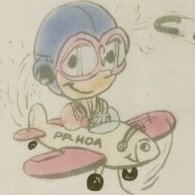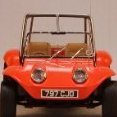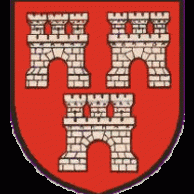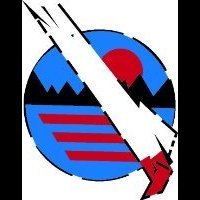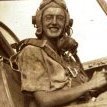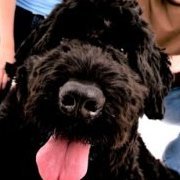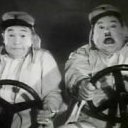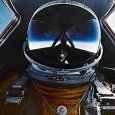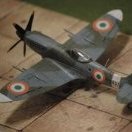Search the Community
Showing results for tags 'hasegawa'.
-
Dear fellow Britmodellers, this is my 1/72 Kora (Ex-Eduard) Fw-190 G8. Czech company Kora has released several re-boxings of the 1/72 Eduard Fw-190 with additional etched and resin parts. I built from this boxing: What you get inside this box is not really a F8, but the Eduard A8 sprues with additional resin bombs, photo-etch parts and several colorful marking options. For a change, I decided to model the G8 "Jabo Rei" (long range) variant with ETC503 racks and fluted exhausts. For conversion, I used white metal parts from this old Hasegawa boxing 52075 (AP 175). The metal parts only need to be slightly adjusted to fit. The model was painted with Mr.Hobby acrylics (RLM74/75/76), the markings were cobbled together from my decal bank. The G8 had the nose guns deleted, so I left these off. I replaced the wing guns with metal parts from Master. For the DF loop, I used photo etch strip, bent to shape over a cocktail stick. The Morane antenna is a photo-etch leftover from my spares box. Thank you for your interest!
-
I'm pleased to present my most recent build, the 1/48 Hasegawa A-4F, wearing the colorful test livery of BuNo 154175, assigned to the Naval Air Test Center at NAS Patuxent River, circa July 1969 (reference photo). Decals come from the Caracal Models' A-4E/F Skyhawk sheet, and a handful of aftermarket rounds out the presentation. The build itself was mostly pleasant. The Hasegawa A-4 tooling as been around for almost twenty-five years, so it's strengths and weaknesses are well-defined at this point. I opted not to fix the step at the back of the slat wells; any scratch repair job on my part would have been far more noticeable than a subtle geometry error you have to know to look for. The only really iffy issues for me were with the engine intakes and the rear fuselage air brakes. The intakes are a bit of a mini-model in their own right; I had to paint, assemble, and mask them prior to fairing them into the fuselage. Because my reference aircraft didn't have the stiffening plate, I was able to remove it, which let me line up the intake to the fuselage without much bother -- otherwise, the two halves of the stiffening plate weren't going to match up no matter how much I sanded or prayed. It's an adage that if a part can be opened, the kit maker probably expects you're going to pose it open, and the air brakes are no different here. It took some (mostly) judicious sanding to get them basically flush with the surrounding fuselage area. Full marks for any kit maker that includes a bespoke closed part for anything that can be opened! The aftermarket for this one includes an engine exhaust plug from Phase Hangar Resin; intake FOD covers from Quickboost; and most notably, brand new Aero 1D 300-gallon drop tanks from Flying Leatherneck. The kit drop tanks are frightfully basic, lacking any detail whatsoever. These tanks have detail to spare, particularly with the characteristic fuel-filler cap towards the left front of the tanks. I fumbled a bit with the tank assembly, thinking the joins where the nose and fin attach were meant to have a visible seam; they were most decidedly not, and much filling, sanding, and swearing ensued, but the final result isn't too bad. They required a bit of surgery to fit on the kit pylons, but nothing too radical, and they don't affect the center of gravity sufficiently to turn a properly-weighted Hasegawa A-4 into a tail-sitter. (I did manage to drop one and snap off the fin, alas, after painting, so the starboard tank has a slightly cracked fin.) I tried to use a LP Models crew ladder, but I just couldn't get the mounting rod to match up with the matching hole I drilled before I bought it. Shame, because it's very nice. The ladder on the ground in some of the pictures is the LP version; the mounted ladder is from the kit. The figures are from the very nice ICM US Pilots and Ground Personnel (Vietnam War) set, and the base is a pre-made Zoukei-Mura model, which remains the best $20 I've ever spent in the hobby. Decals went down like a dream, just as you'd expect from Caracal and Cartograf. The only iffy decal issue arose when it came time to place the US insignia over the wing vortex generators on the port wing, the bane of any US Navy or Marine Skyhawk build. I erred on the side of caution and hoped that prodigious applications of MicroSol would get the decal to conform, but I needed to have been more aggressive with actually pressing down on the decal during the initial application, I think, as it's not a "painted on" look, with slight bumpy contours visible between the strakes. To their credit, the Cartograf/Caracal decals held up to the MicroSol, only tearing when I tried to force the issue (literally). A tiny piece of white decal from a spare on the sheet covered most of my sins, but it's the one weak point with the decals on the build, all due to the user. Paints are a mixture of Mr. Paint and Mr. Color lacquers, laid down over black and pink Mr. Finishing Surfacer 1500. The red landing gear bay door outlines were applied with a red paint pen. I went for a black-basing technique on the light gull grey uppers and white lowers, and I opted against a glossy finish. I really wanted a worn-down aircraft in this one, so I used an off-white instead of an insignia white and put down a final dull coat using Winsor & Newton Galeria Matt. Indeed, it's a heavily weathered bird, probably not to everyone's taste, but I wanted to work on my weathering skills. I went for an overall uniformity of grub, using a warm grey oil wash. Though I'm sure no crew chief would let his or her aircraft out of the hangar quite so scuffed up, I'm envisioning the end of a series of grueling test flights in the frankly oppressive summer humidity of southern Maryland, as well as claiming a bit of artistic license. This particular airframe went through so many changes of scheme that I wager it was repainted as often as it was scrubbed down. On the whole, this was an enjoyable project, one that really stretched my skills. Thanks for reading and for taking a look.
-
Hi, Now that I have cleared the last troublesome kit I will build from my stash (AMT P-40N), it's time to get to the Corsairs. It started with the F4U-5, then I found an AU-1 (F4U-6) kit I didn't know existed, and recently I found an F4U-7. I thought I'd work on them all together since they are all related. As everything will be in triplicate this will be a slow build. Cheers, Wlad
-
Well I've not actually started yet, but I thought posting this would stop me procrastinating and make a start. I'm not usually a fan of wide arches and large spoilers, however there was something about the transkit from C1 that really appealed to me, so then I decided to go the whole hog and throw in the Honda engine. I think this will be a long term project and will probably build a few side projects along the way (against my better judgement) as and when I get stuck or confused, which could be often. Plus I've still got the City to finish - Andy
- 160 replies
-
- 16
-

-
So: Hasegawa F-104G, still bagged Paulus Victor decals Master pitot tube New Ware mask Humbrol 116 Some images from the net Should give me a model of RDAF F-104G R-699, US serial 63-12699 first flight June 5 1964, to Denmark November 1964 (NMF?) painted green October 1 1969 and a bit (a lot?) worn at RAF Gutersloh in September 1975, which fits the theme? Just waiting for Quinta 3D cockpit decals but we've got 11 days still? Chris
- 28 replies
-
- 16
-

-
This is my initial entry to the GB. It is well on its way and has been languishing on the Shelf of Doom for some time. I started it almost 2 years ago and was last touched in September 2022. My aim is to finish it this time around, I have until 17 Jun to complete it as I will be away in Europe when the GB finishes. It will be finished as 140111 as it appeared at a Fincastle competition. I started with this. Made a started the CP-140 mods to the kit and did the cockpit I have completed most of the assembly and am using an Eduard etch set for the wheel wells and exterior It now is at this stage, now to find the rest of the etch set and parts to finish it off!
-
Hi all! One aspect of modern warfare I find fascinating is Electronic Warfare. Now I don't have the first clue how any of it works but I do know you'll have to train people to conduct and counter EW. And that's where this specialised Skyhawk comes in! Four TA-4Fs were converted to EA-4Fs and fitted with electronic equipment for fleet training. These were operated by VAQ-33 'Firebirds', who would simulate electronic threats during fleet training. The kit will be Hasegawa's TA-4J in 1/48, with Caracal decals for the VAQ-33 Skyhawk. There's a handful of photos of these Skyhawks floating around, including on of this specific EA-4F at NAS Norfolk in 1975, courtesy of AirHistory.net. Big fan of Hasegawa and the A-4 is one of my favourite aircraft so this should be a fun build. Thanks for looking in!
-
Here is my Hasegawa Mitsubishi Lancer EVO I Group A. This is the result of a refurbishment of a model built many years ago. If I recall correctly this was one of the first Hasegawa kits (#25066) I ever build and I was certainly in the period when I did not paint bodies. After it spent some time in the freezer to make the glue brittle I was able to dismantle the model with minimal damage and, given their age, the decals were relatively easy to remove. I painted the body and repainted other parts as necessary. New decals are from Shunko (SHK-D212) and went on with minimal fuss. Grant. Original model after many years After refurbishment With an EVO III from 1996 Rally Sweden
- 12 replies
-
- 18
-

-
After 2023 (link) newsletters, the Hasegawa news for January 2024. Source: http://www.hasegawa-model.co.jp/month/202401/ -------------------------------------------------------------------------- Of interest, the 1/48th A-4C Skyhawk kit - ref. PT22 - is coming back ! http://www.hasegawa-model.co.jp/product/pt22/ Also interesting for quarter scaler: http://www.hasegawa-model.co.jp/product/07529/ V.P.
- 55 replies
-
- 8
-

-
My modelling interest in this period lies mainly with Naval Aviation, specifically the Silver Wings of the Fleet Air Arm and the Yellow Wings of the US Navy. Going with the Yellow Wings, previous GBs saw me build in 1/32 the Grumman F3F (Revell) and Boeing F4B (Hasegawa). For this GB I will be building the Curtiss BF2C in 1/32 from Hasegawa. The BF2C had a short service life, 1934 to 1937. Withdrawn in 1937 after it became apparent the wings had become weakened due to the stresses caused by dive bombing. The kit decals look like they have seen better days, so will be using an aftermarket sheet from the appropriately named Yellow-Wings Decals to build an aircraft from VF-5B, USS Ranger. I believe this was the only squadron that flew the BF2C.
-
For my axis build for this GB I have landed on perhaps the prettiest of all Japanese twins of WW2, the Kugisho P1Y Ginga attack bomber. This is quite a sleek, aerodynamic machine, designed (at least according to Wikipedia) by the same designer responsible for Japan's earliest Shinkansen bullet trains. I reckon you can see a resemblance! The Ginga (Japanese for 'Milky Way') - allied codename Frances - was designed by the Yokosuka Naval Air Technical Arsenal, also know as Kugisho, as a fast attack bomber for the IJN. Most production machines (about 1000), such as my subject P1Y1, were built by Nakajima, while a night fighter variant was built in much smaller numbers (>100) by Kawanishi. Here's the sprues from what looks to be a beautifully-engineered kit from peak Hasegawa (circa 1995): Not sure if the decals have yellowed just a little bit or the white band around the Hinomarua is meant to be an off-white? Kit also has a small PE fret for (I'm guessing?) HF antenna? I've made a little bit of a start on the cockpit. Interestingly there is a clear part for a bulkhead with small windows to mask off. Good practice for the masking to come! It's an elegant little thing, and, especially in 1/72, a fair contrast for my big 1/48 Beaufighter! Am looking forward to chipping away at it. Cheers, Gerard
-
Dutch F-104G Starfighter carrying a 'special' load (B43 nuclear bomb). Kit is Hasegawa 1:72 with some additions - like the engine/exhaust, PE for the cockpit, resin seat and resin wheels and master pitot tube. Main decals are from Xtradecal and the stencils by Armycast. Painted with Vallejo acylics and weathered with Ammo products and oil paints.
- 18 replies
-
- 48
-

-

-
Here is my 1:72 Eurofighter Typhoon FGR.4, ZJ949 "H", No. 1435 Flight Royal Air Force, RAF Mount Pleasant, Falkland Islands, 2015. Hasegawa kit, which is a bit disappointing for the "best 1:72 Typhoon kit on the market" - yes, it's nice molded and quite accurate, but have some annoying fit issues and only "in-flight" configuration of engine nozzles. Nothing that you expect from 2012 Hasegawa kit priced about 30 GBP. Small Eduard brass for the cockpit, Reskit exhaust nozzles and Pavla MB Mk.16A ejection seat have been added. Painted mostly with Gunze C334 "Barley Grey". Decals are mix of Hasegawa, Revell and self-printed (1435 Flight emblems). It's the third (and probably the last) model in my little project "Falklands Guardians", which was to include all 3 types of fighters used by the RAF on Falkland Islands after 1982. So here they are together: Phantom FGR.2 of 23 Squadron, RAF Stanley 1983 (Fujimi), Tornado F.3 of 1435 Flight, RAF Mt. Pleasant 1999 (Revell ex-Italeri) and Typhoon FGR.4 of 1435 Flight, RAF Mt. Pleasant 2015 (Hasegawa): Thanks for watching!
- 30 replies
-
- 111
-

-

-
- Eurofighter Typhoon
- Hasegawa
-
(and 1 more)
Tagged with:
-
Hi, Here's my rendition of an Argentine F4U-5 late in its service life. Details of this build, together with an AU-1 (F4U-6) and a F4U-7 are found here: Kit: Hasegawa 09075 (JT75) - F4U-5N Corsair, 2001 Paints: Alclad - ALC 117 Dull Aluminum, ALC 121 Burnt Iron, ALC 309 Black Primer & Microfiller Mig - A.MIG 0047 Satin White Mission Models - MMM005 Aluminum, MMP063 Light Gull Grey FS 36440 Model Master - 4749 Engine Gray, 4757 Aircraft Interior Black, 4851 Yellow Zinc Chromate, 17178 Chrome Silver Polly Scale - 505096 US Interior Green A/N611, 505252 British Dark Earth, 505260 British Middlestone, 505264 British Extra Dark Sea Gray Tamiya - LP-2 White, X-10 Gun Metal, X-14 Sky Blue, X-17 Pink, X-19 Smoke, XF-1 Flat Black, XF-2 Flat White, XF-7 Flat Red, XF-16 Flat Aluminum, XF-19 Sky Grey, XF-26 Deep Green, XF-69 NATO Black, XF-85 Tire Black, TS-13 Clear, TS-80 Flat Clear, Fine Grey Primer Vallejo - 71.062 Aluminium, 71.065 Steel, 71.300 Glossy Sea Blue Johnson’s Future Aftermarket: Aztec Models 48-042 decals Ultracast 48192 - F4U Corsair / F6F Hellcat Wheels Radial Tread (32” x 8” late style wheels) True Details TD48497 instrument panel Scratch built: Seat armrests; reflector gunsight; instrument panel “eyebrow” switches and wiring bundles; drop tank vent, feed hose, and rear strut; tail gear holdback ring; DF loop cover; propeller governor; distributor and magneto covers; radio altimeter antennas; aerial wire antenna; wingtip navigation lights; main gear brake lines. On to the pictures. IMG_4420 by Wlad Franco-Valias, on Flickr IMG_4412 by Wlad Franco-Valias, on Flickr IMG_4411 by Wlad Franco-Valias, on Flickr IMG_4410 by Wlad Franco-Valias, on Flickr IMG_4409 by Wlad Franco-Valias, on Flickr IMG_4413 by Wlad Franco-Valias, on Flickr IMG_4419 by Wlad Franco-Valias, on Flickr IMG_4418 by Wlad Franco-Valias, on Flickr IMG_4417 by Wlad Franco-Valias, on Flickr IMG_4415 by Wlad Franco-Valias, on Flickr IMG_4407 by Wlad Franco-Valias, on Flickr Thanks for looking, and thank you all who contributed to the Work in Progress. Wlad
-
Hobby 2000 from Poland is to re-box the Hasegawa 1/72nd Heinkel He.111 - ref. 72048 - Heinkel He.111H-2/H-3 - Western Front 1940 https://www.hannants.co.uk/product/H2K72048 - ref. 72049 - Heinkel He.111H-3 - Eastern Front 1941 https://www.hannants.co.uk/product/H2K72049 V.P.
- 30 replies
-
- 6
-

-

-
Hi all, As I alluded to in the Chat section, I consider it disgraceful that we've got this far without a single C-47 in the Group Build ! So here I am, plugging that gap with this 1/200 offering from Hasegawa. I built their 1/200 scale Hercules in the recent Transport GB and found it delightful. I hope this one is as good. As you'd expect from Hasegawa, the parts look good on their sprues. Also as you'd expect from Hasegawa, the white bits on the decal sheet look decidedly creamy. Two RAF options are provided: the 267 Squadron scheme shown on the box art and a 233 Squadron, D-Day aircraft. I'll be choosing the latter, which I believe is/was also the scheme carried by the BBMF's Dak. Cheers
-
Hi all, I would like to share some pictures of my model of a Starfighter 'S' in Italian Service as it appeared in 1981. It carries the insignias of an interceptors of the 51^ Stormo, based at Istrana in the North of Italy. The kit is the old 1:48 Hasegawa of the version 'S'. To improve the model, I sourced the following after market items: - Aires resin jet exhaust; - Master brass pitot probe; - Eduard resin ejection seat MB Mk7 and harness; - Eduard resin Sidewinder; - Aires resin Sparrow; - Skymodels decals. This kit is by now outdated by the newer 'state-of-the-art' Kinetic one, but I found that the plastic is still very nice with crisp and finely engraved surface details, thin and clear transparent parts and it well reproduces the distinctive forms of this aircraft. However, lazy Hasegawa didn't include the full range of modifications that are necessary for the 'S' version, hence I had to re-work the most obvious ones. The version 'S' was designed by Loockheed in answer to a specification from the Italian Air Force for a more powerful, faster and better armed replacement of the standard NATO version 'G'. The aircraft started to be built by Aeritalia in Turin (former FIAT) in the late '60. It was powered by a more powerful J79-GE-19 and was armed with the version B or L of the Sidewinder missiles and with Sparrow missiles (from which the letter 'S' in the designation). At take-off, the more powerful engine required a larger mass flow rate of air, consequently the air intakes were supplemented by rectangular openings on the sides that were not present in previous versions. In the picture below, I am showing the rectangular lids of these openings that I egraved on the sides of the air intake ducts. The colors that I used for the Italian NATO camouflage were Gunze H-69 (dark sea grey), Gunze H-309 (dark green) and Vallejo Metallic white alluminium for the underside. I think that this is still a good kit with a very good fit and I enjoyed building it. Beside the positive points, I am also listing what are, in my view, its few negative points: - Overstated rivets on the wings which shouldn't be there. - Incomplete range of details for the 'S' version. - Absence of external loads. - Decals with yellow/cream color in place of white for codes. I replaced them with after market decals. The building log can be found here. I hope you like my model, comments and suggestions are welcome. Best regards, Dan
-
Hello, Here is my recently completed Hasegawa 1/48 Barak block 30. I have used isracast conversation and decals. Thanks for looking. Cheers.
-
G'day Pals, it's been a while since i posted a Model in the Aircraft section, i started this build already in 2021 and for some reasons i completely lost interest after i started with the engine and cowling section.... After a complete break in 2022 i exclusively built Tanks in 2023... I went on with Kate this year but to be honest when i looked at the parts i realized that i also had started to rivet the model which didn't really increase my motivation... After a while i brought myself into a ZEN mood and took the riveting marathon as a lesson in humility...and once started it surprisingly went on quite fast. I build the model OOB except for the engine which was a donation from Vector Models, which by the way was significantly larger than the kit engine, so a good amount of work was necessary to make it fit into the cowling..... Thanks for watching & comments! Cheers Hans Kate's Belly....
-
Continuing on with my Hasegawa Japanese planes, but this time a newer kit. My previous two builds were from the mid-70s but this (and the next one to come) is from 2008, one of the rare models I bought brand new. The quality of the plastic and fit were exactly as I had expected and this was a joy to build. I completed this in March of 2023. Painting the Shoki was also quite easy. At this time I had been painting many of my models with a silver primer (I no longer do this) and I just left the primer without a coat of paint. I would likely opt for silver lacquer now, but at the time this was quick and looked the part. The aotake wheel wells were painted in Vallejo Aotake; the anti-glare on the nose is AK Real Colors' SCC 14 Blue Black. The white and yellow parts are also using AK Real Colors, and the red on the tail is Tamiya. The spinner and propellers are AK's 3rd Generation Acrylic Mahogany Brown. I think at the time of making this, this was one of the best finished products I had made up to that point. ----------------------------------------------------------------------------------------------------------------------------------------------------------------------------------------------------------------------------------------- The Ki-44 Shoki, codenamed 'Tojo' by the Allies after the Japanese Prime Minister Hideki Tojo, was created as a high-speed interceptor aircraft. It was somewhat of a departure from earlier Japanese planes that favoured manoeuverability over all other aspects in that the Shoki stressed speed and rate of climb, as well as having heavier armaments. The Shoki took a mostly air defense role, defending their occupied territories and home islands from Allied bombing runs. Production on the aircraft didn't last long; the Japanese stopped making the Shoki in 1944 in favour of the Ki-84 "Frank". However, captured Shokis continued to be used by the Chinese in their Civil War, as well as the by the Indonesians during the Indonesian National Revolution. No Ki-44s survive today except for a single wing section at a museum in China.
-
Another Hasegawa kit I completed around the same time as my last post. This kit was part of the same line as my Tony, using 70s plastic but released with a new box in 1980. Just like the Tony, this kit gave me no issues in assembly and it really cemented my opinion of Hasegawa. This was painted in AK Real Colors' IJN D1 Green Black on the upper surfaces and Hairyokushoku on the undersides. This kit actually didn't come with any decals so I had to use leftover ones from my Tony. The fuselage roundels should be slightly larger but I worked with what I had. This was long before I would have felt comfortable enough to try masking off and painting the correct size (something I still may be hesitant to do). ----------------------------------------------------------------------------------------------------------------------------------------------------------------------------------------------------------------------------------------- The Raiden was designed by Jiro Hirikoshi, the same man who designed the more famous A6M Zero, the fighter that gave Japan aerial superiority in the early stages of the war. The Raiden was built as an Interceptor, and after a long delay in production beginning in 1942, it entered service at the end of '43 until the Japanese surrender. As an interceptor, the Raiden was used to defend Japanese territory against Allied B-29 Superfortress bombers, and was successful in doing so for a short time until the Allies began night bombing runs in March of 1945. This, combined with a lack of numbers in production, limited the Raiden's effectiveness.
- 10 replies
-
- 23
-

-
This is my last Hasegawa model. The kit includes a set of the most awful tracks I have ever seen. Here they are in all their glory............. The "guide teeth" are an almost continuous ridge along the centre line. The destructions look like standard Hasegawa, not bad and reasonably easy to follow. There's a paragraph at the foot of the paint scheme that points out that, as an early Jagdpanzer IV this should have Zimmerit. I've seen after market zimmerit for this kit but I'm not minded to spend any more on it. I'm going to attempt a mod to a later version, post September 1944 when Zimmerit was stopped. JP IVs continued in production until November 1944 when somebody dropped a lot of HE onto the Vomag factory where JP IVs were being built so this will be representing a JP IV from almost the end of production of the L/48 version. On examination of the parts there appears to be a bit of an issue with the rear panel. The cylinders on the back panel behind the idlers on both sides do not line up with the rear of the idler axles, they're offset above them. I don't want to sabotage the strength of the running gear, particularly as the tracks might prove to be a bit tight, so I think this will be left as it is. The early versions had two ports for an MG42, one each side of the main gun. The left hand MG was difficult to use. (Probably gave the driver a headache.) So it was deleted in later models. So I've filled the left hand port and will sand it smooth when dry. Thanks for looking in.
- 69 replies
-
- 10
-

-
Here's my take on the Monogram Pro Modeller rebox of the 1/48 Hasegawa F4U5. I live about 80 miles from the location of NAS Glenview, so I felt compelled to do that scheme. This model was going to have that scheme, and that was that- more on that later. Aftermarket additions include a Wolfpack cockpit set, Quickboost gun barrels, and ResKit tires and wheels. Paints are Mission Models glossy sea blue, Mr Hobby aqueous semi gloss clear, and Vallejo Model Air colors and matt and satin varnish for the anti glare panel, cockpit, wheels, etc. Decals are a mix of kit decals, Super Scale, and Eagle Strike. I started off on the Wolfpack cockpit, which really was nice to work with. Minimal fitting was needed. The only issue was with the cockpit side walls- installed on the cockpit tub, they would have sat well below the cockpit opening. Those were glued to the fuselage sides instead. I used the included decal for the instrument panel, which was sealed with Vallejo satin varnish, topped with a drop of Mr Hobby aqueous clear gloss on each gauge. I used Vallejo metal color dull aluminum for some wear. I also scratched out armrests. I then set to work on the engine, which was pretty straightforward, except for drilling 36 tiny holes for the ignition wires. It was made to look grimy with oils. I used a shim, about .030", in the lower part of the nose to address the poor fit between the fuselage sides and lower panel that's part of the wing. The shim was glued on one fuselage side, allowed to dry, then the fuselage stump on the front clamped and glued. I had to open the notch in the exhaust mount to fit. It sat down snug when installed. The rest of the assembly was uneventful The seams were addressed with a thin application of Mr Dissolved Putty and careful sanding. Surgery was performed to put the flaps in the up position. The priming, painting and pre-decal gloss clear were equally uneventful. The adventure began when the decals came out! I bought this kit second hand, and it was still factory sealed. What I did not know is how it may have been stored! When it arrived, I took a quick look over the decal sheet, and it appeared fine. Wrong! I cut and dipped a national insignia in water, and to my horror, it was full of cracks! Thankfully, I have an abundance of aftermarket national insignias. A closer inspection of the kit sheet showed cracking in nearly every larger white decal! This Corsair was going to be a Glenview bird no matter what, and I saw no aftermarket NAS decal options, so I treated all the kit decals I would be using with liquid decal film, and set about using them anyway. They released from the paper just fine, and adhered wonderfully. Unfortunately, the cracks still showed. I made up a mix of Vallejo white paint, slightly thinned and mixed with retarder medium, and started filling the cracks with a fine brush. I then used micromesh to polish out the painted areas, and it came out acceptable. Photos are of the worst one, before touch up, during, and then after the final clear coat. This aircraft had distinctive exhaust pipes, which were replicated with bent styrene rod, drilled out. Weathering was kept minimal, as the real thing looked pretty clean. Tamiya Weathering Master was used on the exhaust, and I did some pin wash on the upper fuselage to replicate oil and fuel spills. Additional detailing was done to the canopy, gun sight, and upper switch panels. I cut the wingtip lights out, made a "bulb" in each with Micro Kristal Klear, painted the area silver, added red and green for the bulbs, and made lenses with Kristal Klear. I added a bit of wiring and tubing to the wheel wells, which wasn't worth the effort, or worth photographing. It all but disappeared once it was closed up and painted. I noticed the real aircraft had white overspray by the "6" on the nose, which was replicated. I took some artistic liberty in adding this on the starboard side too. There was a cutout in the lower part of the orange band decal, and I drilled a hole there for the "T" antenna, not realizing it's a bit far forward. Oh well! This build was fun, but not without a few hiccups. I rarely say this about my own work, but I am genuinely satisfied with the end result. It felt like it took forever to finish- it was started at the beginning of January and finished today. Here's the finished product. Photos were taken in indirect natural light and indoor light. Apologies for the novel length writeup. Feedback is always welcome and appreciated. Thanks for looking!
- 13 replies
-
- 33
-

-

-
I've long had a soft spot for the P-40. And so although this is not my normal genre (what's that spinny thing at the front?) and not my normal scale (in fact my first 1/48 build), I'm keen to make a second contribution to the GB by modelling 3 Squadron RAAF CO Bobby Gibbes' Kittyhawk IA ET953, code CV V. Arguably the GB doesn't need another Kittyhawk, but I reckon it does need a RAAF one! I'll use the Hasegawa kit. With its familiar sprues. Complemented maybe with some etch. And with decals from Novascale. (Anybody used Novascale decals before?) Of course there is a bit of conjecture and discussion online about this aircraft's markings. Some photos show the aircraft with what look to be white squadron letters and others what is thought to be blue or red. So at some point in the brief 3-4 month career ET953 had as Bobby Gibbes' personal aircraft (by about September 42 he was flying a Kitthawk II/P-40F) at least some of the markings were changed. And then there's the type A rounders under the wings but type Cs on the fuselage, which photos do seem to confirm. (I found a link to the IPMS NSW magazine with a great article exploring the markings of Gibbes' desert Kittyhawks here - https://drive.google.com/file/d/1ljyz_249Morhw_JOlF6CsrQeUL2bbmFD/view ) Here in Aus a Kittyhawk has been restored to represent ET953, which features white squadron codes but the undersides look to be light Mediterranean blue with period incorrect type D roundels on the wing undersides. Pics here. So I think I'll stick with the scheme as on the decal sheet (dated August 42), which seems to have a nice representation of Gibbes' famous nose artwork of a kangaroo kicking a helmeted daschund... It's getting late so I might post some more info about Bobby Gibbes (an ace pilot in more ways than one) and 3 Squadron as the build progresses. But for now, I've made a start with the cutting of some plastic, and am already paying close to attention to all the other terrific P-40 builds in this GB for guidance and ideas! Should be a fun build! Gerard
-
Calling it done for this P-47. This is a vintage Hasegawa 1/72 Thunderbolt kit built straight OOB. Since the cockpit was very sparse I made sure the pilot was well painted. Paints are mostly Vallejo except for RAF dark green for which I used Tamiya. Decals are from a very old Frog kit. HB975 flew with 135 Squadron RAF from Chittagong, India.



